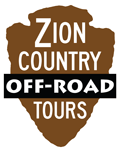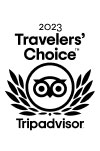Bryce Canyon National Park is wonder to behold! It is a veritable playground for outdoor enthusiasts of every age, ability, and interest level. The gorgeous terrain lends itself to hiking, mountain biking, and horseback riding during the spring, summer, and early fall and snowshoeing and sleigh riding during winter.
Bryce Canyon National Park offers a 365-day experience—just pick your day and prepare to be amazed. Centuries of wind and water have chiseled the red sandstone hoodoos and white monoliths to give this park its distinctive beauty.
If you are looking to get away from the crowds of Zion National Park or The Grand Canyon, Bryce Canyon is the place to be. There is a quiet here you will not find at the other national parks. The solitude and stunning vistas ignite the imagination and jack up the sense of peace and tranquility.
Geography And Climate—Like No Other Place On Earth
One of the first surprises is Bryce Canyon is not a canyon at all. It is a collection of large amphitheaters encompassing 35,835 acres or just over 55 square miles. Bryce Canyon National Park is one of the jewels in The Mighty Five National Parks tour which also includes Zion National Park, Canyonlands National Park, Arches National Park, and Capitol Reef National Park. If you are interested in completing this tour we strongly recommend purchasing the “America the Beautiful” annual pass from the National Park Service.
Acres and Acres Of Adventure—Things To See And Do
Bryce Canyon National Park can be accessed by the scenic drive through the park. Along the drive there are thirteen viewpoints exposing the highlights of the park.
When you are ready to stretch your legs, there are 50 miles of trails from which to choose–eight day hikes and two overnight hiking and camping trails. The hikes range in distance and difficulty so unless you are an experienced hiker you should check the trail rating before you go. However, do take the trail ratings with a grain of salt. If you are not in good physical condition an easy trail will feel anything but because you are hiking at altitude.
Both overnight hikes do require a backcountry permit. Same-day permits can be purchased for a nominal fee at the main visitor’s center. Reservations are not accepted. However, since Bryce Canyon National Park is never as busy as Zion National Park reservations are rarely closed. If you did not win the lottery for The Narrows consider the short drive through the Zion Tunnel to the peace and tranquility of Bryce Canyon.
For winter fun, there are over 10 miles of ungroomed trails within the park and 20 miles just outside the park.
On A Clear Day
The view from the Rainbow Point and Yovimpa Point on extremely clear days unfolds up to 160 miles into Arizona and western New Mexico. By night fall, you can be treated to a sky so pure you will be able to see over 7,000 stars without the aid of a telescope. In most cities, only a few dozen stars are visible because of air and light pollution. Bryce Canyon is such a stargazer’s paradise it hosts an astronomy festival annually in June and has an asteroid named after it.
Camping and Lodging
There are two campgrounds in the park: Sunset Campground and North Campground. Loop A of the North Campground is the only part accessible year-round. The rest of the camping opens in the spring and closes in the fall. Lodging is available nearby, however.
Plants and Animals
In the park there are over 400 species of native plants spread over three distinct climate zones. As you visit Bryce Canyon National Park you will be able to see the type of plant life change as you climb in elevation. One of the superstars is the Great Basin Bristlecone Pine. Some species within the park are over 1,600 years old.
If you are looking for wildlife, Bryce Canyon is the place to be. Beginning with the eastern border of Zion National Park you can catch the nimble Big Horn Sheep bouncing around on the cliffs. The park is also home to three endangered species: the Utah prairie dog, the California condor, and the southwestern willow flycatcher, a species of bird.
Typical forest animals such as black bears, elk, squirrels, and of course Utah’s amazing Mule Deer can be found by a quiet peek through the trees. The Paunsaugunt Plateau, the name of the area comprising the east side of Zion National Park and through Bryce Canyon, is home to some of the state’s trophy Mule Deer population. Have your camera ready because if you catch a glimpse of these amazing creatures you are going to want to show all your friends.
Distinctive Features—What The Heck Is A Hoodoo (who-do)?
Eons of erosion are responsible for the large bowls and unique sandstone formations known as hoodoos. The hoodoos are the distinctive lacy looking spires of multi-colored sandstone. The coloration comes from the mineral-rich sediment left by the ancient Cretaceous Seaway from the Paleocene and Eocene period, at least 40 million years ago. Each color is from a distinctive mineral. Some of the formations are a result of the uplift of the Earth’s crust up to 70 million years ago. It is the same period of uplift that formed the Rocky Mountains. Bryce Canyon National Park boasts one of the highest concentrations of hoodoos on the planet.
At 12 miles long, 3 miles wide, and 800 feet deep Bryce Amphitheater is the largest formation of hoodoos within the park. The other amphitheaters continue through the park for another 20 miles. The exposed rock you see in Bryce Canyon is the same as you would see in The Grand Canyon and Zion National Park but younger than each of those parks respectively.
Temperature Extremes
Average temperatures range from 9° F (-13° C) to 83° F (28° C). However, the record low temperature was -28° F (-33° C) on 10 December 1972 and the record high was 98° F (37° C) on 14 July 2002. Bryce Canyon National Park receives 15-18 inches (380 to 460 mm) of precipitation per year. Keep in mind if you are coming from Zion National Park or The Grand Canyon to Bryce Canyon you will experience temperatures at least 10 degrees cooler so plan accordingly.
Highest And Lowest Points
Rainbow Point is the highest spot in the park at 9,105 feet (2, 755m). From this vantage point you can see for miles. Five of Bryce Canyon’s most iconic features are visible from this vantage point: the Vermillion Cliffs, White Cliffs, the Henry Mountains, the Aquarius Plateau, and the Bryce Amphitheater. Yellow Creek is the lowest peak of the park at 6,620 feet (2,020 m).
Elevation—Here A Few Things You Should Know
Visitors to Bryce Canyon National Park are often surprised by the elevation. The highest peak in the park sits at 9,105 feet which is a full 1,000 feet higher than nearby Zion National Park and 1,800 feet higher than The North Rim of The Grand Canyon. Enjoying nature at this elevation is an amazing experience, if you are prepared.
Here are a few tips to help:
1. Train—If you are not a regular walker or hiker, lace up your sneakers and get moving. Incorporate hills and/or stairs to help condition your body. If you are planning to wear a backpack during your trip be sure to train with it on.
2. Hydration—At altitude, you will dehydrate faster. It is cooler and drier so you might sweat less and not even notice the subtle cues you are running a quart low. When you do drink sip rather than gulp. When it comes to staying hydrated at altitude, slow and steady wins the race.
3. Sunscreen—At this elevation, sunburns can happen in as little as 10 minutes. The UV-B rays, which are the ones that cause sunburn, are up to 60-percent higher in Bryce Canyon National Park than they are at the beach. That means you will burn faster and deeper in less time. Nothing ruins a great vacation quicker than a bad sunburn so sunscreen is essential.
4. Be Prepared—It’s not just the Boy Scout motto it is smart! Little things like bandages to cover blisters and lip balm go a long way. But, you should always have some sort of snack with you too. You will also need to bring your own source of water as finding water in the park is not reliable.
A special note about Altitude Sickness:
No matter how much time you spend at elevation each time you ascend higher than 8,000 feet you are at risk for altitude sickness. The two main risk factors for developing altitude sickness are ascending more than 1,000 feet in a single day and then being active at altitude. Simply driving from Southern California to Bryce Canyon and hopping out of the car for a nice hike is enough to bring on symptoms. It can be mild but it can also be life threatening.
Mild altitude sickness is also known as acute mountain sickness (AMS). The symptoms are like a hangover. Fatigue, headache, and nausea can be mild to severe.
Failure to head these symptoms will allow AMS to progress to more the life threatening high altitude pulmonary edema (HAPE) characterized by excess fluid on the lungs, fever, and a foamy spit. As AMS progresses it turns into high altitude cerebral edema (HACE) which is fluid on the brain which leads to confusion and unsteadiness. As AMS progress to HACE, drowsiness and loss of consciousness or even death will occur.
If you begin experiencing any discomfort, the best thing to do is to stop preferably in the shade. Sip your water, have a snack and allow your body to cool down. Focus on taking deep, full breaths. When you are feeling the symptoms subside, the only safe thing to do is to move to a lower elevation. Remaining at elevations above 6,000 feet is not advised.
We hope these tips make your trip to Bryce Canyon memorable. If you are looking for another unique adventure, take the short drive over to the west side of Zion National Park for one of our amazing Zion Country Off Road Tours. From the Sand Dunes outside of Sand Hollow State Park in Hurricane, Utah, to the Zion backcountry in Springdale, Utah, we offer Jeep tours, ATV tours, and UTV tours that will extend your Bryce Canyon experience. We hope to see you soon!


